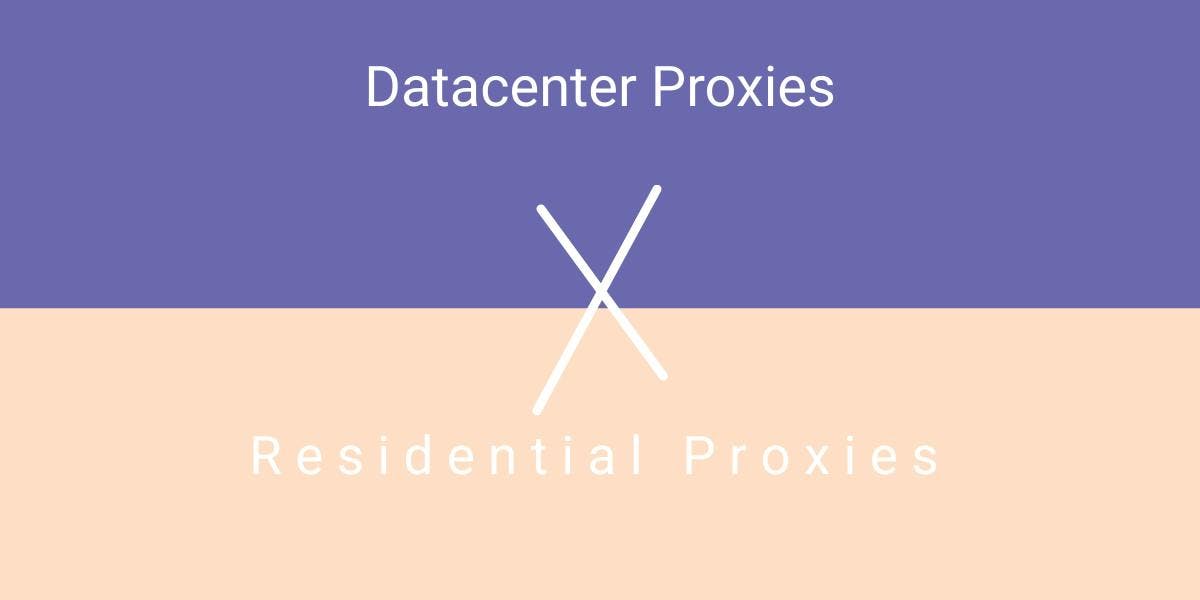Puppeteer vs Selenium: Which to Choose
Flipnode on Jun 08 2023

Puppeteer and Selenium are widely recognized open-source tools primarily utilized for browser automation and testing purposes. Puppeteer, introduced just five years ago, has quickly garnered praise among developers due to its valuable features and impressive performance. On the other hand, Selenium, a more established framework dating back to 2004, continues to maintain its position as an industry leader in web automation, offering support for various programming languages and platforms.
In this comprehensive article, we will delve into a detailed comparison of these two frameworks. By examining their characteristics and capabilities, you will gain the necessary insights to make an informed decision regarding the framework that aligns best with your specific requirements.
Main features and use cases
Puppeteer
At its core, Puppeteer is a Node.js library primarily utilized for building automated testing environments. Developed by Google, its main objective is to provide a high-level API for controlling Chrome and Chromium through the DevTools Protocol.
In contrast to Selenium, which caters to multiple programming languages, Puppeteer is more focused and geared towards delivering a specific set of control structures. It exclusively supports JavaScript and serves as a remote control library specifically designed for Chrome.
Puppeteer finds extensive usage among developers for various tasks, including:
- Testing Chrome extensions.
- Capturing screenshots and generating PDFs of web pages for UI testing.
- Conducting tests on the latest Chromium versions.
- Automating manual testing procedures, such as form submissions and keyboard inputs.
- Web scraping
By specializing in these areas, Puppeteer provides developers with a targeted and efficient toolset for tackling specific testing and automation requirements.
Selenium
When comparing Selenium to Puppeteer, it becomes evident that Selenium is a comprehensive testing library that offers support not only for Chrome and Chromium but also for Firefox, Safari, Opera, and Microsoft Edge. Furthermore, Selenium enables developers to write test scripts using a wide range of languages such as JavaScript, Ruby, C#, Java, and Python. This flexibility empowers developers to conduct sophisticated tests using their preferred programming languages and target different browsers using a unified tool.
One notable aspect of Selenium is the inclusion of several components, namely Selenium WebDriver, Selenium IDE, and Selenium Grid, which enhance the capabilities of the library and cater to diverse testing requirements.
Common use cases of Selenium include:
- Web performance testing.
- Web application testing.
- Automation testing.
- Performance testing.
- Data scraping.
By encompassing these use cases, Selenium provides developers with a robust and versatile toolkit for various testing scenarios, making it a popular choice among testing professionals.
Advantages and disadvantages
To determine the most suitable tool for your specific needs, it is crucial to carefully evaluate the advantages and disadvantages of each option. In this section, we will provide an in-depth analysis of the key pros and cons of both Puppeteer and Selenium.
Puppeteer
Advantages:
- Direct access to the DevTools protocol and the ability to control Chrome, one of the most widely used browsers globally.
- Faster execution speed, thanks to its focus on using a single language (JavaScript) and targeting a specific browser.
- Reduced dependency requirements since there is no need for separate maintenance of browser drivers.
- Availability of performance management features, including the ability to capture screenshots and measure load performance.
Disadvantages:
- Limited language support, as Puppeteer currently only supports JavaScript for scripting.
- Restricted browser support, with Puppeteer primarily focused on the Chrome browser at present.
Selenium
Advantages:
- Extensive browser support: Selenium aims to support a wide range of browsers, platforms, and programming languages, providing flexibility for developers.
- Built-in tools: Selenium offers a comprehensive testing and automation framework with components like WebDriver, IDE, and Grid, allowing for advanced testing capabilities.
- Integration with CI/CD: Selenium provides direct integrations with continuous integration and continuous deployment (CI/CD) systems, enhancing the testing process.
Disadvantages:
- Complex installation process: Due to its support for multiple platforms, languages, and browsers, setting up Selenium can be more complicated compared to Puppeteer.
- Limited performance management features: Unlike Puppeteer, Selenium lacks built-in performance management capabilities, requiring additional tools for such functionalities.
- Steep learning curve: Selenium has a relatively steep learning curve, especially for beginners, due to its extensive features and capabilities.
Differences in set up and web scraping
In this section, we will compare the environment setup and web scraping efficiency using Node.js for Puppeteer and Selenium.
Installation:
Installing Puppeteer is straightforward with a simple npm command, while Selenium installation requires additional steps specific to the programming language.
Puppeteer:
npm install puppeteer
Selenium:
npm install selenium-webdriver
npm install chromedriver
Browser control and web scraping
Both tools provide the capability to programmatically control web browsers for scraping dynamic content from web pages. Let's compare the code for launching a headless Chrome instance, navigating to a specific URL, waiting for dynamic content to load, and scraping the page.
Our target for scraping is http://quotes.toscrape.com/js/, a dynamic web page where quotes are loaded dynamically through JavaScript. The quotes are rendered within <div> elements with the "quote" class.
Dependencies and setting the target:
Puppeteer:
const puppeteer = require('puppeteer');
const url = 'http://quotes.toscrape.com/js/';Selenium:
const { Builder, By, Key, until } = require('selenium-webdriver');
const chrome = require('selenium-webdriver/chrome');
const url = 'http://quotes.toscrape.com/js/';Selenium supports multiple browsers, so it requires importing specific browser drivers (chrome drivers in this case) along with the webdriver. Chrome driver is implicit with Puppeteer.
Launching a headless Chrome instance and navigating to the target URL:
Puppeteer:
const headlessBrowser = await puppeteer.launch({ headless: true });
const newTab = await headlessBrowser.newPage();
await newTab.goto(url);Selenium:
let driver = await new Builder().forBrowser('chrome').setChromeOptions(new chrome.Options().headless()).build();
await driver.get(url);Puppeteer uses the launch() method to launch the browser instance, and the newPage() method creates a new browser tab. The goto() method is used to navigate the tab to the specified URL.
Selenium uses the Builder() constructor to build a new Builder instance with specific options. The build() method creates and returns a new instance of the webdriver session.
Note: The awaitable calls must be enclosed inside an asynchronous function.
Waiting for dynamic content to load:
Puppeteer:
await newTab.waitForSelector('.quote');Selenium:
await driver.wait(until.elementLocated(By.className('quote')));Puppeteer uses the waitForSelector() method to wait for a specific CSS selector (in this case, the ".quote" class) to be located on the page. Selenium uses the wait() method in conjunction with the until property to wait for a specific element to be located.
Scraping the quotes:
Puppeteer:
let quotes = await newTab.evaluate(() => {
let allQuoteDivs = document.querySelectorAll(".quote");
let quotesString = "";
allQuoteDivs.forEach((quote) => {
let quoteText = quote.querySelector(".text").innerHTML;
quotesString += `${quoteText} \n`;
});
return quotesString;
});
console.log(quotes);Selenium:
let quotes = await driver.findElements(By.className('quote'));
let quotesString = "";
for (let quote of quotes) {
let quoteText = await quote.findElement(By.className('text')).getText();
quotesString += `${quoteText} \n`;
}
console.log(quotesString);Puppeteer uses the evaluate() method to execute a function in the current page context and manipulate the DOM elements. It selects all elements with the ".quote" class and extracts the quote text. Selenium provides the findElements() method to locate elements based on the given selector (By.className) and extracts the quote text using the getText() method.
Closing the browser:
Puppeteer:
headlessBrowser.close();
Selenium:
await driver.quit();
Puppeteer offers the close() method to close the browser instance, while Selenium provides the quit() method to exit the browser instance and destroy the driver session.
Which one should you choose?
At this stage, it is evident that both Puppeteer and Selenium are powerful tools with exceptional capabilities for testing automation. However, the decision of whether to use one or the other ultimately depends on your specific needs or those of your organization.
If your work is primarily focused on Chrome, Puppeteer is the ideal choice. Its high-level API provides unparalleled control over the browser, ensuring efficient test setup. Additionally, Puppeteer's emphasis on web automation rather than testing makes it well-suited for activities such as web crawling and scraping.
On the other hand, if you require support for multiple browsers and programming languages, Selenium is the recommended option. Selenium WebDriver enables direct interaction with various browsers, expanding the scope of testing without relying on external tools.
By considering your requirements and evaluating the differences between Puppeteer and Selenium, you can make an informed decision on which tool best aligns with your specific needs.
Wrapping up
In conclusion, this article has provided a comprehensive discussion and comparison of two popular automation frameworks, Puppeteer and Selenium. Both frameworks offer unique features and advantages, and we hope that this information serves as a useful guide for you to identify your specific requirements and select the most suitable tool for your future projects.



